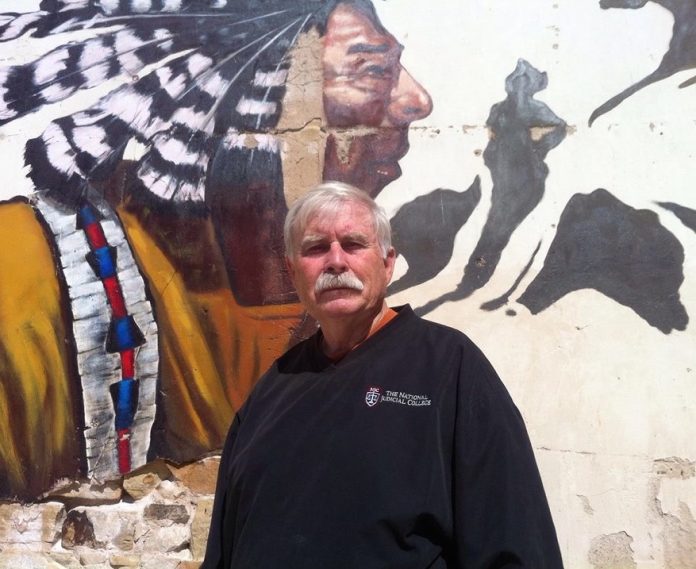“ONE GAME AT A TIMEâ€
GAVEL GAMUTÂ By Jim Redwine
Gentle Reader, should you have read last week’s Gavel Gamut you may recall that another reader, Dr. Michael Jordan of Osage County, Oklahoma, sent a letter to the editor asking that I address the topic of immigration. No, I do not know why, but after a couple of minutes of reflection I thought, “Why not?†So here goes. Our current immigration mess should not be any more challenging than Winston Churchill’s view of the old Soviet Union that he called, “a riddle wrapped in a mystery inside an enigmaâ€. A few quick paragraphs ought to suffice. Let’s start back in the 1960’s when our national immigration policy began to gradually change from one based on admitting immigrants based on entrepreneurial or economic qualifications, that is, what does the immigrant have to offer, versus admitting family members to reunite with previous family immigrants already in America.
According to George Mason law professor F.H. Buckley:
“U.S. immigration policies were radically changed in 1965 when national origins quotas were replaced with preferences for family reunification. People from countries that had recently supplied immigrants were given a leg up, while those from countries that had supplied immigrants centuries before found it much harder to get in.Â
In the 1950s two-thirds of legal immigrants came from Europe or Canada, by the 1990s that figure had fallen to 16%. During that same period, the percentage of legal immigrants from Latin America and Asia rose from 31% to 81%.â€
See The American Illness, Essays on the Rule of LawÂ
By F.H. Buckley at p.51.
Buckley has written extensively about immigration to America. Ironically, Buckley is himself an immigrant from Canada. That aside, in his above-referenced book, Buckley posits that part of the immigration solution is for the United States to return to our pre-1965 immigration policies. Buckley avers that USA law used to determine admittance of immigrants on a general policy based on national origin quotas and economic benefits to America, but changed to a policy of family reunification being the main factor. This led to a change from the long-time admission of immigrants mainly from Europe and Canada to those mainly from Latin America and Asia. Buckley states:
“What is uncontroversial is that the United States could do a better job of competing for the highly qualified immigrants who are more likely to confer economic benefits on natives. America is exceptional in the way in which, more than any other first world OECD (Organization for Economic Co-operational and Development) country, it favors family-based immigration and admits relatively few employment-based immigrants.
“A move to a more entrepreneurial immigration system would likely offer non-economic spillover benefits. Economic immigrants are less likely to commit crimes or to rely on the welfare system, and for countries that favor them, immigration is less contentious. The natives are more likely to welcome immigrants, who in turn are more likely to assimilate to the natives.â€
Buckley: pp. 51-53
Buckley’s book was published in 2013, but it has an eerie prescience to today’s southern border crisis of children being dropped over walls and left alone in the desert in hopes of somehow uniting with their family members already in the United States.Â
Of course, this does not resolve the immediate situation. We must follow our Constitution and provide due process to those who are legitimately seeking asylum. We have the means to provide humanitarian relief as we abide by the laws and policies we established until we change them. Deserving immigrants should be welcomed without prejudice as to national origin, race, ethnicity and faith or lack thereof and without encouraging the breakup of families. A gradual, fair return to an entrepreneurial immigration policy should begin now. And before anyone projects a conclusion that Buckley or anyone else is saying Canadians and Europeans are superior to Latin Americans or Asians, let us be clear. It is not one’s race, ethnicity or national origin that should determine whether an individual is admitted into our country. The criteria should be mainly whether the aspiring immigrant can be a benefit to America.
Through the fog of one of my undergraduate psychology courses at Indiana University I loosely grasped the concept of projection. One aspect of Sigmund Freud’s theory of projection is that we humans subconsciously cast upon others our own failings as a self-defense mechanism. When it comes to America’s approaches to the problems of immigrations and debates that have raged since at least 1620 and Plymouth Rock, I submit Dr. Freud would diagnose many of us as projectionists. But before we address what Emma Lazarus called the Mother of Exiles, the Statue of Liberty, and the “…[H]uddled masses yearning to breathe free, The wretched refuse of your teeming shoreâ€, let me suggest an analogy between immigration and environmentalism based on an old adage.
In the simplest of terms, the green debate is between those who want to build a house in the woods and those who already own a house in the woods. And with immigration, the competing positions are often those held by we whose ancestors immigrated here versus those who would like to become ancestors for those who may later immigrate here. And while we have certainly managed to maintain many raging controversies about whether certain classes of peoples, Irish, Catholics, Chinese, Muslims, Italians, even people indigenous to North America, and numerous other groups, have a right to exist in the United States, our current concentration involves our southern border.
Some of us might project our own fears, prejudices, and greed onto one side or the other of the issues. However, as with every extremely complex problem, it may require much more time, effort, and goodwill than most of us care to invest. It is easier for us to simply say those who disagree with us are motivated by hate or ignorance. Hard work is never as appealing as harsh rhetoric. Facts are the enemy of bombast. Knowledge of the facts on immigration is vital to constructively addressing the problem. Just as catcher Crash Davis advised in the movie Bull Durham, we need to concentrate on the here and now and take things one “game†at a time.
For more Gavel Gamut articles go to www.jamesmredwine.com
Or “Like/Follow†us on Facebook & Twitter at JPegRanchBooks&Knitting



 ASCENSION ST. VINCENT FOUNDATION
ASCENSION ST. VINCENT FOUNDATION








